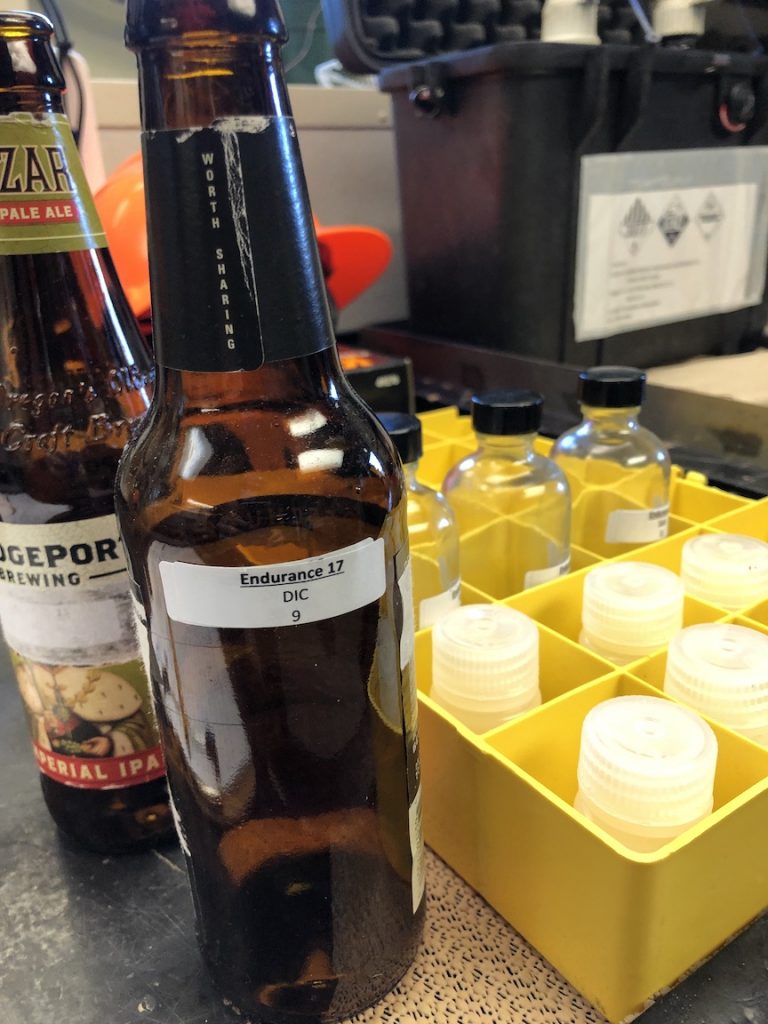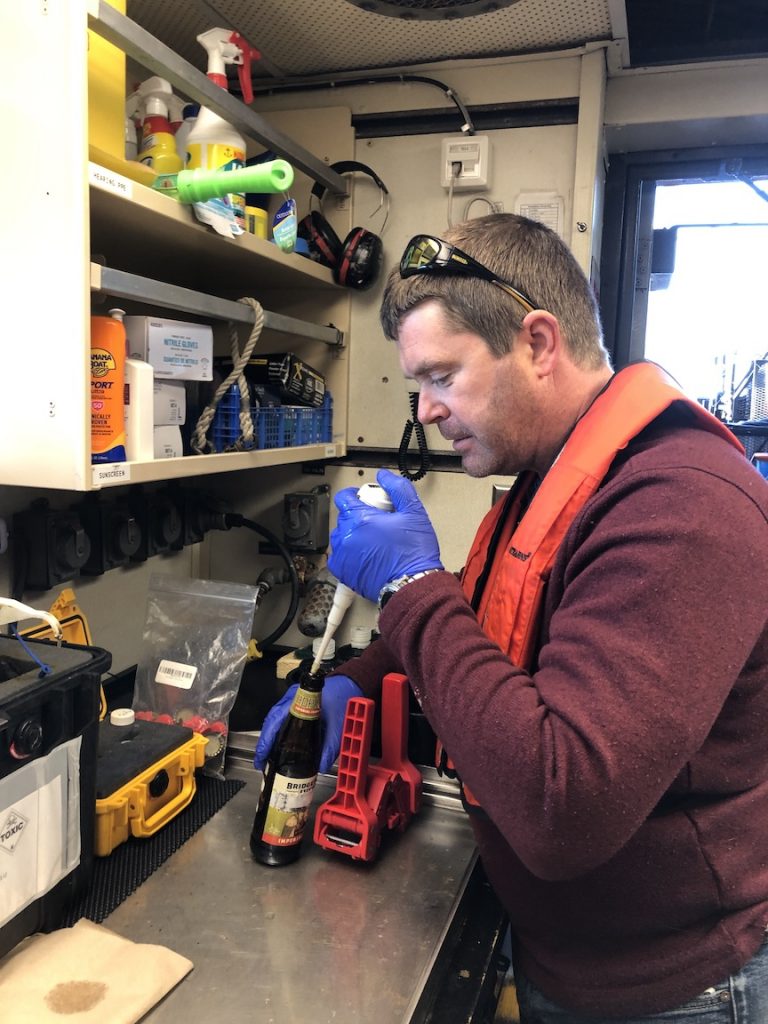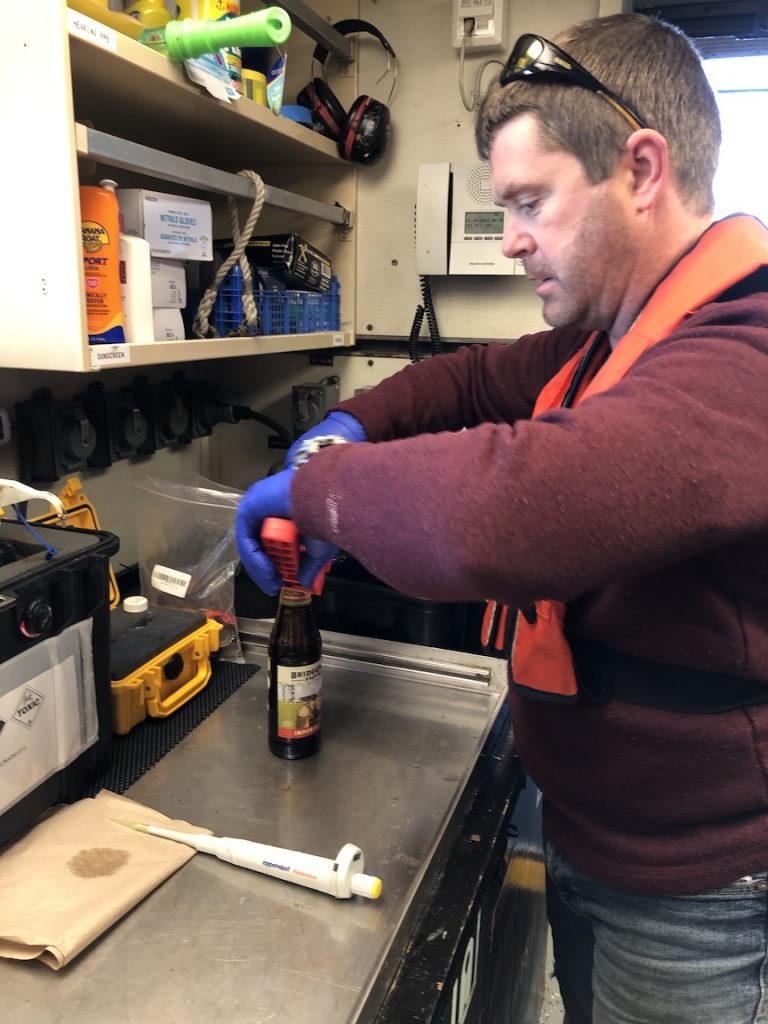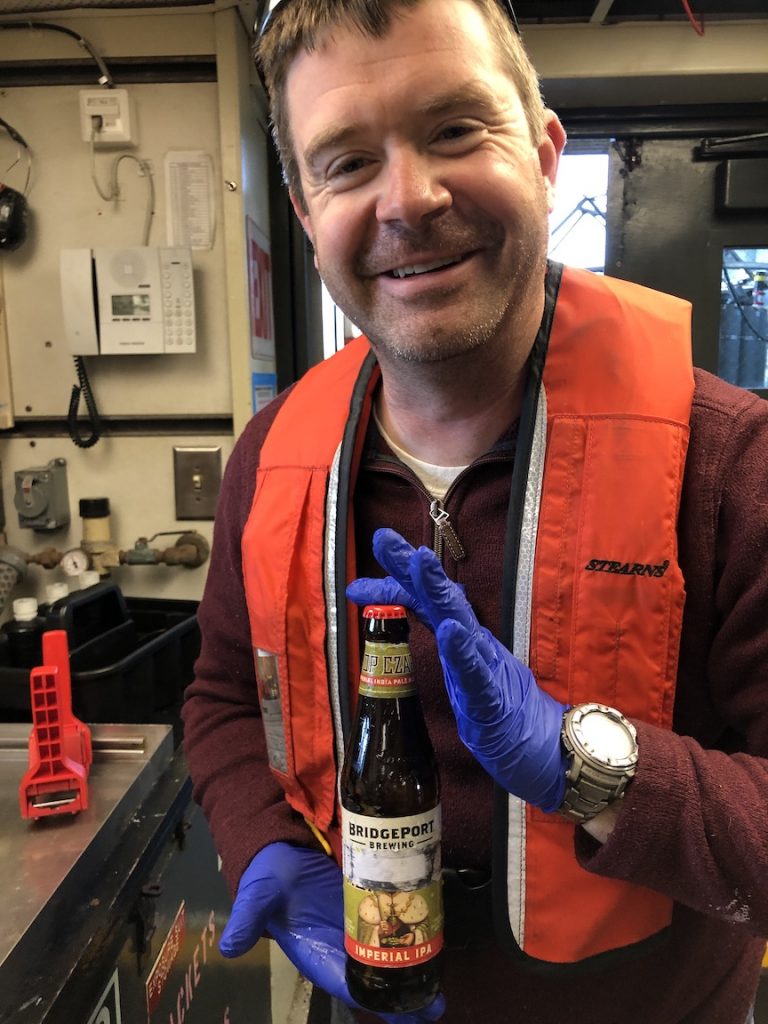
Recycling Beer Bottles

As it turns out, breweries and scientists have something in common. They both like to recycle beer bottles.
As part of daily operations, the Endurance 17 team conducts water sampling on water collected by a CTD (conductivity, temperature, and depth) Rosette. The water samples are used to validate oxygen, salinity, nutrients, chlorophyll, and dissolved carbon dioxide concentrations measured by instruments on the gliders and moorings.
An empty beer bottle happens to be the perfect container for samples used to measure carbon dioxide (CO2) concentrations. Similar to brew masters, scientists want to keep out any stray CO2 from their samples. For scientists the reason is accuracy of measurements. For brew masters, the reason is taste of the beer. (Scientists donated used beer bottles to the scientific cause and no grant money was used to purchase the beer).
In space dedicated to water sampling aboard the R/V Thomas G. Thompson, there’s a holding area for recycled, washed and sterilized brown beer bottles. Water sampling lead Jonathan Whitefield and team member Marnie Jo Zirbel are a tag team conducting the sampling. Marnie Jo fills the beer bottles from the Rosette and hands off to Jonathan, who adds mercuric chloride to neutralize anything that could create CO2. He then tops the bottle with clean beer cap, using a professional beer cap closer to secure the sample within. The bottles will later be opened to measure CO2 content.
Water sampling lead Jonathan Whitefield demonstrates how water samples are processed in recycled, capped beer bottles.



